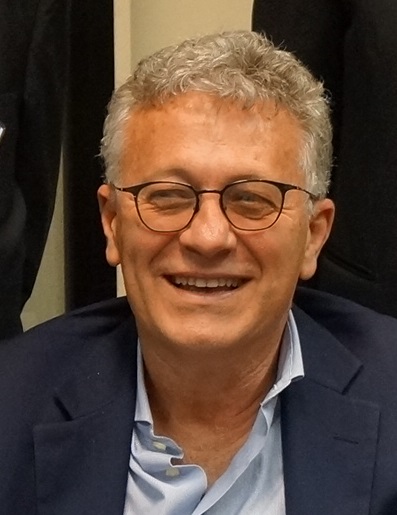17 July 2018
Interview with...Paolo Annunziato Presidente CIRA (Centro Italiano Ricerche Aerospaziali)
Presidente CIRA
[Cleared n°6 - anno XV - giugno 2018]
Presidente CIRA
[Cleared n°6 - anno XV - giugno 2018]

Dr. Annunziato, CIRA [Centro Italiano Ricerche Aerospaziali - Italian Aerospace Research Centre] has always worked with a view to strengthening the synergies in the field of Technological Research & Development in the Aviation and Space sectors. What are the activities of the new Plan known as PRO.R.A. and what are the leading programs it contains (the so-called Flagship programs) that are more directly related to the world of Aviation and ATM?
Continuing with the mission entrusted to CIRA more than thirty years ago, the new PRORA aims, through research, technological development and testing activities, to support national and regional SMEs and large industries in the aviation and space sectors with their development of innovative products in order to maintain the competitiveness of the national aerospace system. The Plan includes several flagship programs, some of which are mainly addressed to the aviation industry, such as those relating to unmanned and autonomous aircraft (RPAS Flagship), electric propulsion for regional aircraft (ELECTROPLANE Flagship) and ice protection systems (ICE Flagship), with the objective of making aviation increasingly safe, resilient and sustainable. In the future, however, air traffic will see non-conventional systems coming into service, such as hypersonic trans-atmospheric aircraft or stratospheric platforms for surveillance and communication applications. These types of aircraft systems are also included in the updating of PRORA, which helps Aviation, ideally, to move towards Space. From among those mentioned, the program which is more immediately connected with the ATM sector is undoubtedly the RPAS program; the integration of drones within civil airspace will be the dominant theme in aeronautical research over the coming years. Drones have developed significantly in Europe, thanks to the range of relevant applications in various areas of social and economic interest. The European SESAR program, with the support of bodies such as ENAV, has defined the road maps for technological and operational development which represent the reference points for all those now engaged in this area and which must necessarily be supported by the national research and development programs like PRORA. Integration into airspace, and thus the creation of UTM, will concern all classes of drones, from large ones (typically Medium Altitude Long Endurance) to mini and micro ones, which will operate at low altitude.
One of the issues of particular interest today is the integration of Unmanned Aircraft operations into the national airspace i.e. of what are more commonly known as drones; what are the activities in this area that CIRA intends to invest in? What are the connections in this field with ENAV?
CIRA has conducted research and technological development projects in the field of unmanned aircraft since the early 2000s, with particular emphasis on automatic flight technologies and demonstration activities. More recently, a major area ofactivity has focused on the integration of drones into airspace, in particular with reference to the Detect & Avoid system, unanimously considered an important enabling technology. The “Flare” flying laboratory of CIRA, equipped with a an automatic and remote control avionics system based on collision avoidance technology, was the first prototype of Optionally Piloted Aicraft to fly in Italy, and among the first in Europe, within the scope of national and international research projects (Sesar RAID). The next step will be the integration of these technologies on unmanned platforms.
The RPAS program also intends over the coming years to target other enabling technologies, including an increase in the situation awareness of the remote pilot, aircraft landing management, data links for operations beyond the range of view and radio, for different types of applications (e.g. weather risk management and monitoring, search and rescue, precision farming). The validation process will be in line with the European strategic plan, using both ground-based facilities and in flight testing (developments of FLARE). At this stage, collaboration with ENAV will be absolutely essential for CIRA.
In your opinion, from a technological point of view, what can we expect from drones in the future and what impact will they have on our lives?
For some years now public opinion has considered drones to be a means of great social and economic utility, thanks to their use in areas such as security, environment and land monitoring, freighting, logistics and agriculture. Over the next twenty to thirty years, we expect there will be an exponential increase in the production of drones and their use also in urban areas with high population density with significant impacts on citizens due to the presence of significant low altitude air traffic; the so-called Urban Mobility should be mentioned among the most innovative applications for passenger transport. Institutions will need to assist what promises to be a revolution, both in regulatory and technological terms, with appropriate policies and infrastructural investments. In addition to airspace integration as mentioned before, it will be important to think about environmental impact mitigation requirements for example the use of electricity.



